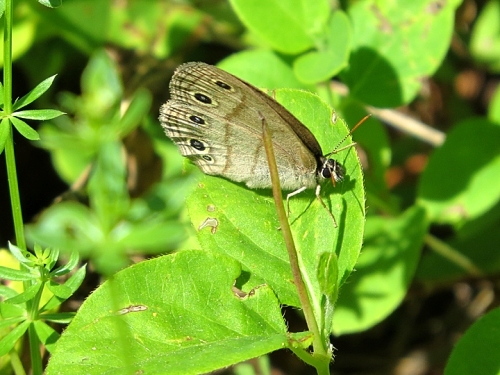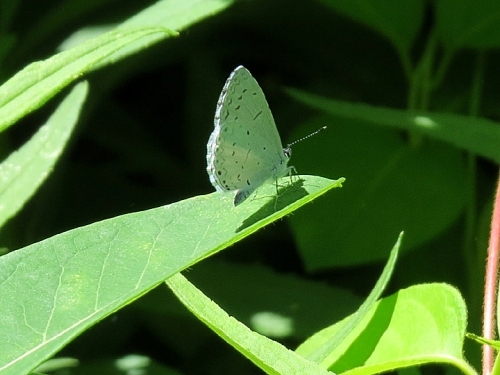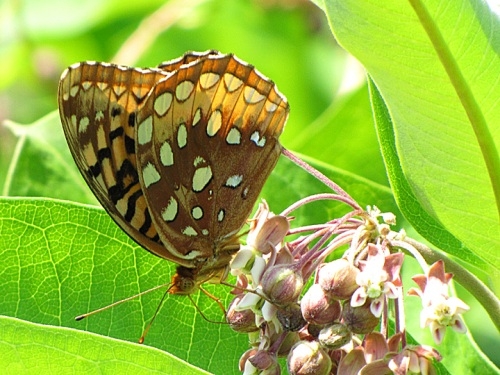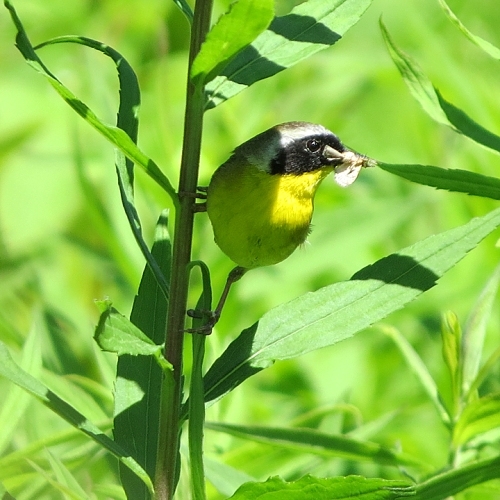Mariton: Butterfly Season
by Tim Burris, Preserve Manager. Photos by Carole Mebus.

Little Wood Satyr
Little Wood Satyrs were numerous last week on our butterfly walk. There were considerably less of them this week. We are nearing the end of this spring’s brood, and likely won’t find any next week. The caterpillars of this species feed on grasses, and the butterflies are usually found in the shade of trees along the edge of fields. It is small but handsome, with its many eyespots that help to confuse predators.

Spring Azure
There were quite a few Spring Azures this week. This is a very small butterfly, but adds bits of blue as it spreads its wings and rises up from the vegetation.

Great-spangled Fritillary on an early milkweed.
Great-spangled Fritillaries are one of the most common butterflies at Mariton. This orange butterfly is often mistaken for Monarchs when flying because of its color and size. There is plenty of food for both species’ caterpillars here (fritillaries eat violets, Monarch eat milkweeds). Next week, the milkweeds should be in full bloom at Mariton. Milkweed blossoms attract many species of butterflies for the nectar. We should have a good morning next week.

Common Yellowthroat
Butterfly season is when we seem to see more Common Yellowthroats. We hear them on almost every bird walk, but after their young hatch they seem to come out of the thick brush for better viewing. This male has a moth in its bill that it was taking to the nest. They are stunning warblers and have a wonderful song to go along with their looks.
